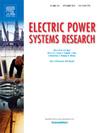基于改进Shapelet方法的电能质量扰动分类方法
IF 3.3
3区 工程技术
Q2 ENGINEERING, ELECTRICAL & ELECTRONIC
引用次数: 0
摘要
新能源和非线性电力电子设备的广泛并网,使得电能质量扰动问题更加频繁,严重影响电网系统的稳定运行。针对该问题研究模型的实时性要求,本研究提出了一种改进的Shapelet方法,并将其应用于pqd的分类。首先,提出子序列块的概念,利用多个长度范围的子序列增强Shapelet的多样性;为了解决子序列块搜索时间复杂度高的问题,采用多尺度极值点峰值距离法确定子序列块的长度范围。该方法利用黑风筝算法(BKA)对变模态分解(VMD)参数进行优化,将PQD信号分解为多个模态分量,然后通过置换和组合熵筛选干扰分量,计算极值点的平均峰值距离;其次,利用多重损失函数通过子序列块之间的相似性损失和距离损失来优化所选子序列块的质量;最后,采用K-means权值初始化方法加速模型的收敛。实验结果表明,该方法在16种模拟环境中识别pqd的准确率为98.63%,每个数据样本的平均耗时为0.141 ms。在实测的真实数据上,识别准确率为98.20%,每个数据样本的耗时为0.08 ms。该方法可为电网系统的实时PQD分析提供较好的选择。本文章由计算机程序翻译,如有差异,请以英文原文为准。
A power quality disturbance classification method based on improved Shapelet method
The extensive grid connection of new energy and nonlinear power electronic devices has made power quality disturbance (PQD) problems more frequent, seriously affecting the stable operation of the power grid system. In response to the real-time response requirements of the research model of this problem, this study proposed an improved Shapelet method and applied it to the classification of PQDs. First, the concept of subsequence blocks was proposed, and the diversity of Shapelet was enhanced by multiple subsequences of multiple length ranges. In order to solve the problem of high time complexity of searching subsequence blocks, the length range of subsequence blocks was determined by the multi-scale extreme point peak distance method. This method uses the Black Kite Algorithm (BKA) to optimize the parameters of the Variable Mode Decomposition (VMD), decomposes the PQD signal into multiple modal components, and then screens out the disturbance components through permutation and combination entropy and calculates the average peak distance of the extreme points; secondly, a multiple loss function is used to optimize the quality of the selected subsequence blocks through the similarity loss and distance loss between subsequence blocks; finally, the K-means weight initialization method is used to accelerate the convergence of the model. Experimental results show that this method has an accuracy rate of 98.63 % in identifying PQDs in 16 simulated environments, with an average time consumption of 0.141 ms for per data sample. On the measured real data, the recognition accuracy rate is 98.20 % with a time consumption of 0.08 ms for per data sample. This method can provide a good choice for real-time PQD analysis of power grid systems.
求助全文
通过发布文献求助,成功后即可免费获取论文全文。
去求助
来源期刊

Electric Power Systems Research
工程技术-工程:电子与电气
CiteScore
7.50
自引率
17.90%
发文量
963
审稿时长
3.8 months
期刊介绍:
Electric Power Systems Research is an international medium for the publication of original papers concerned with the generation, transmission, distribution and utilization of electrical energy. The journal aims at presenting important results of work in this field, whether in the form of applied research, development of new procedures or components, orginal application of existing knowledge or new designapproaches. The scope of Electric Power Systems Research is broad, encompassing all aspects of electric power systems. The following list of topics is not intended to be exhaustive, but rather to indicate topics that fall within the journal purview.
• Generation techniques ranging from advances in conventional electromechanical methods, through nuclear power generation, to renewable energy generation.
• Transmission, spanning the broad area from UHV (ac and dc) to network operation and protection, line routing and design.
• Substation work: equipment design, protection and control systems.
• Distribution techniques, equipment development, and smart grids.
• The utilization area from energy efficiency to distributed load levelling techniques.
• Systems studies including control techniques, planning, optimization methods, stability, security assessment and insulation coordination.
 求助内容:
求助内容: 应助结果提醒方式:
应助结果提醒方式:


